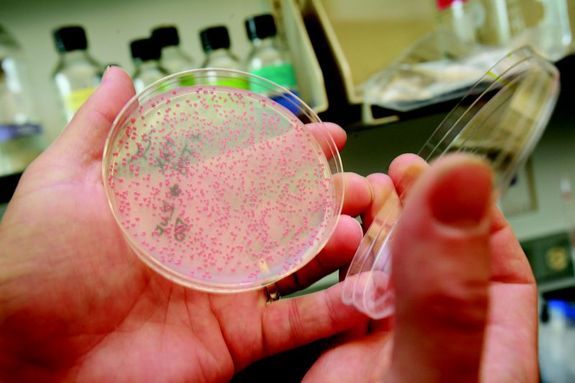Freeloading Yeast Make Unstable Communities

Cooperation is common in nature, but there will always be some who cheat the system. A new study on yeast shows that cheaters can persist in populations but put the entire group at greater risk for extinction.
A colony of yeast (Saccharomyces cerevisiae) survives by breaking down sugar (sucrose) into simpler sugars. Freeloading yeast that survive by mooching off others can exist at ratios as high as 90 percent of the population, but a shock to the environment could wipe out the whole population, the new study reported.
Yeast can only ingest simple sugars like glucose or fructose. Some yeast cells possess a gene, called SUC2, that lets them produce an enzyme to break down sucrose into these simpler forms. But only about 1 percent of the simple sugars stay in the cells; the rest floats away, and other cells can absorb it. Yeast that produce excess sugars are dubbed "cooperators."
Some yeast lack the gene to break down sucrose, so instead, they feast on the labors of their cooperative neighbors. "Those individuals become what we call cheaters or freeloaders — they grow fat," said lead study author and MIT researcher Alvaro Sanchez. [Microscopic Monsters: Gallery of Amazing Bugs]
Sanchez and his colleague Jeff Gore, also of MIT, grew colonies of yeast that either had the sucrose enzyme gene (cooperators) or didn't (cheaters). They compared populations composed purely of cooperators with ones composed of a mix of both cooperators and cheaters.
The mixed population reached a stable balance between cheaters and cooperators, the researchers found. So long as the environment was "benign" — in other words, no environmental stresses were present —the population thrived. In fact, cheaters made up about 90 percent of the mixed population. But the cheaters took their toll when the population faced a stressful environment.
When the researchers shocked the yeast by diluting the population density, the population collapsed. The freeloading yeast were harmless when there were enough cooperators to supply sugars for all, but when resources became scarce, the mixed population suffered.
Get the world’s most fascinating discoveries delivered straight to your inbox.
"Populations with cheaters are viable; they're just less resilient," Sanchez told LiveScience. If the environment deteriorates, it might push the population out of a survival zone into a death zone, he added.
Previously, population changes were thought to occur on different time scales from evolution. But the results of the new study demonstrate that population size and evolution are linked together by a feedback loop. The bigger the population, the more cheaters there are. But when there are too many cheaters, the population is at risk of crashing.
Cooperation is fairly widespread within the animal kingdom, from elephants to honeybees. Some animals even cooperate with other species. In the case of the yeast, cooperation occurs even when cheaters arise in the population, Sanchez said.
The findings were reported April 30 in the journal PLOS Biology.
Follow Tanya Lewis on Twitter and Google+. Follow us @livescience, Facebook & Google+. Original article on Live Science.

 Live Science Plus
Live Science Plus





